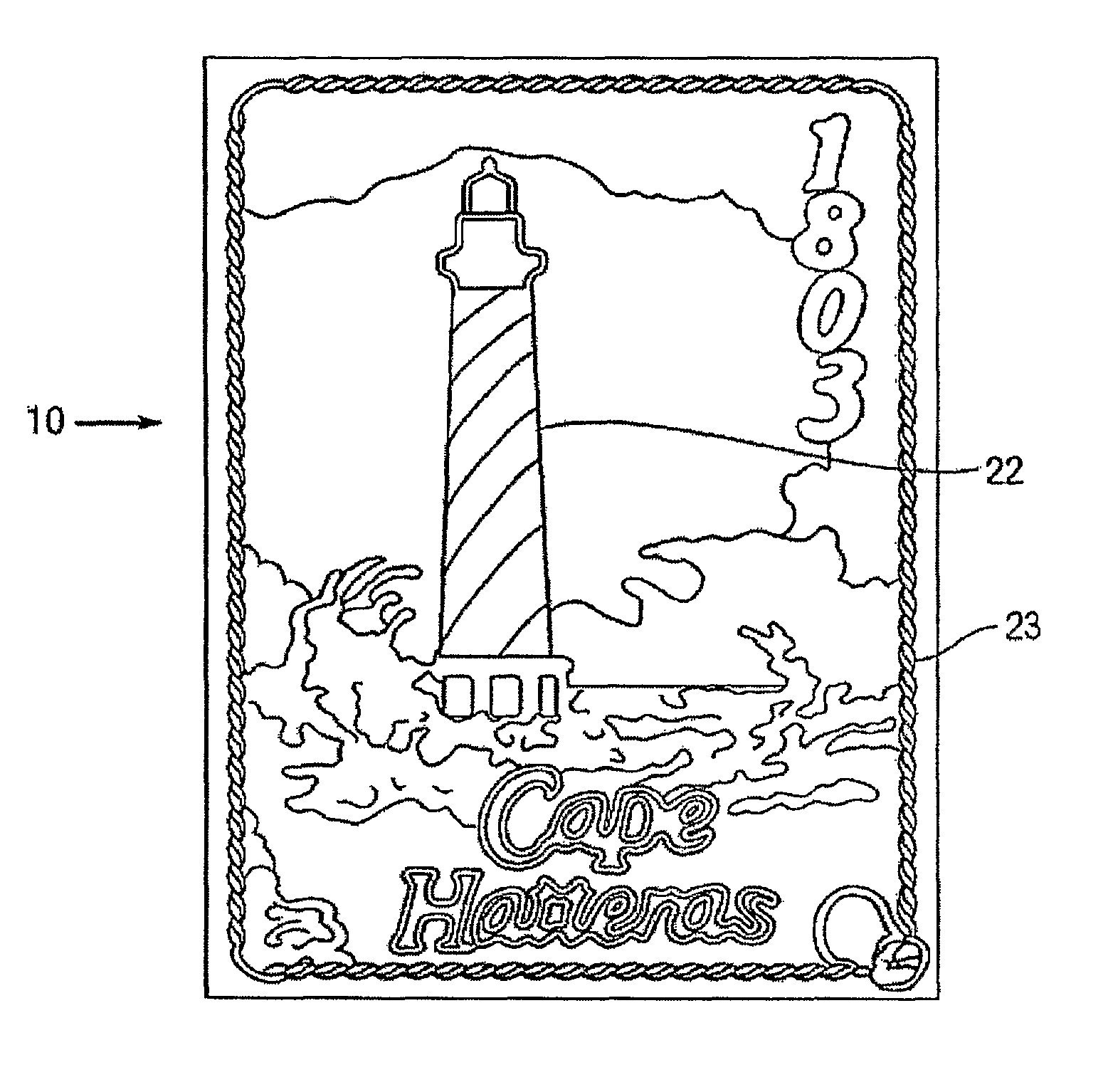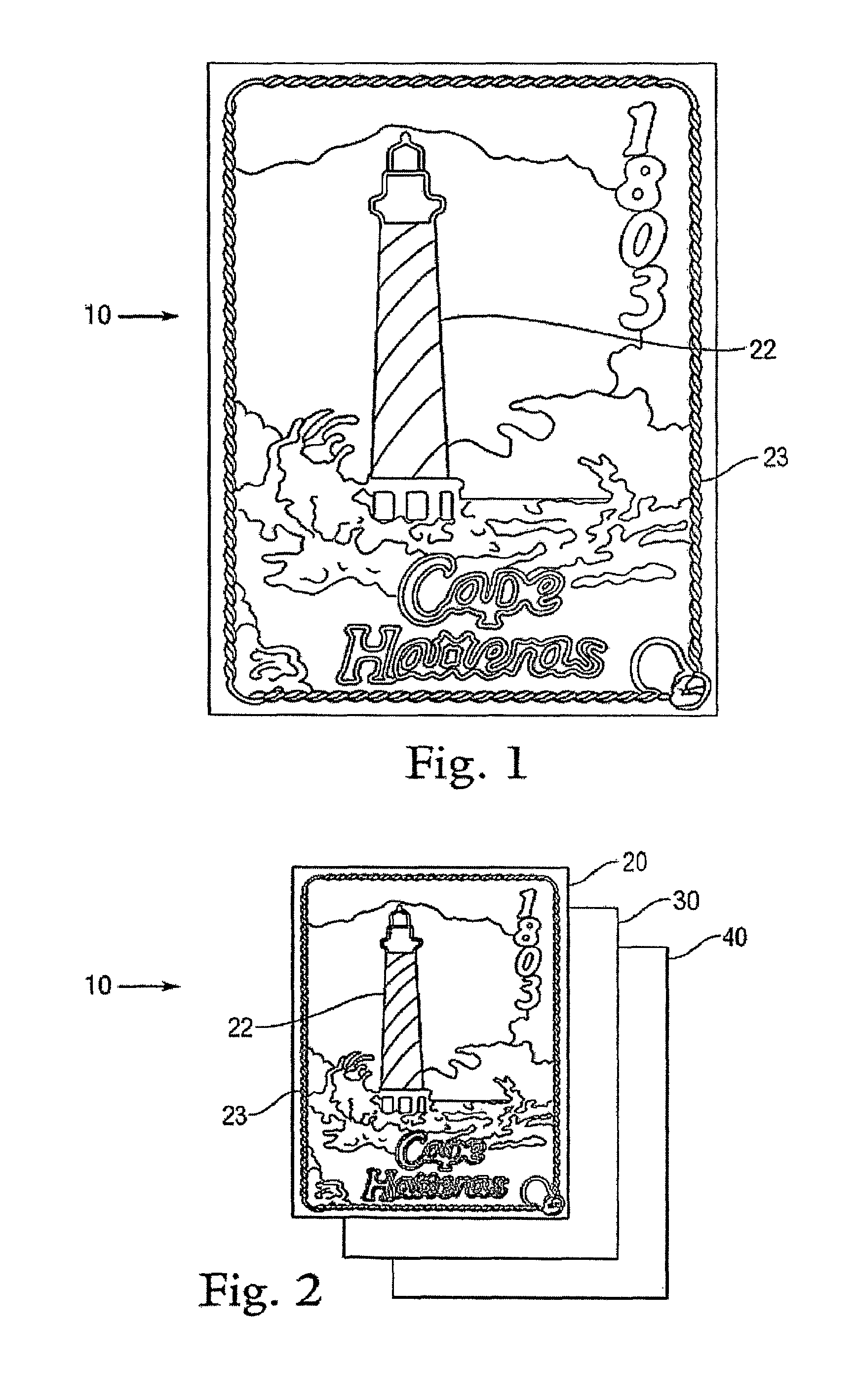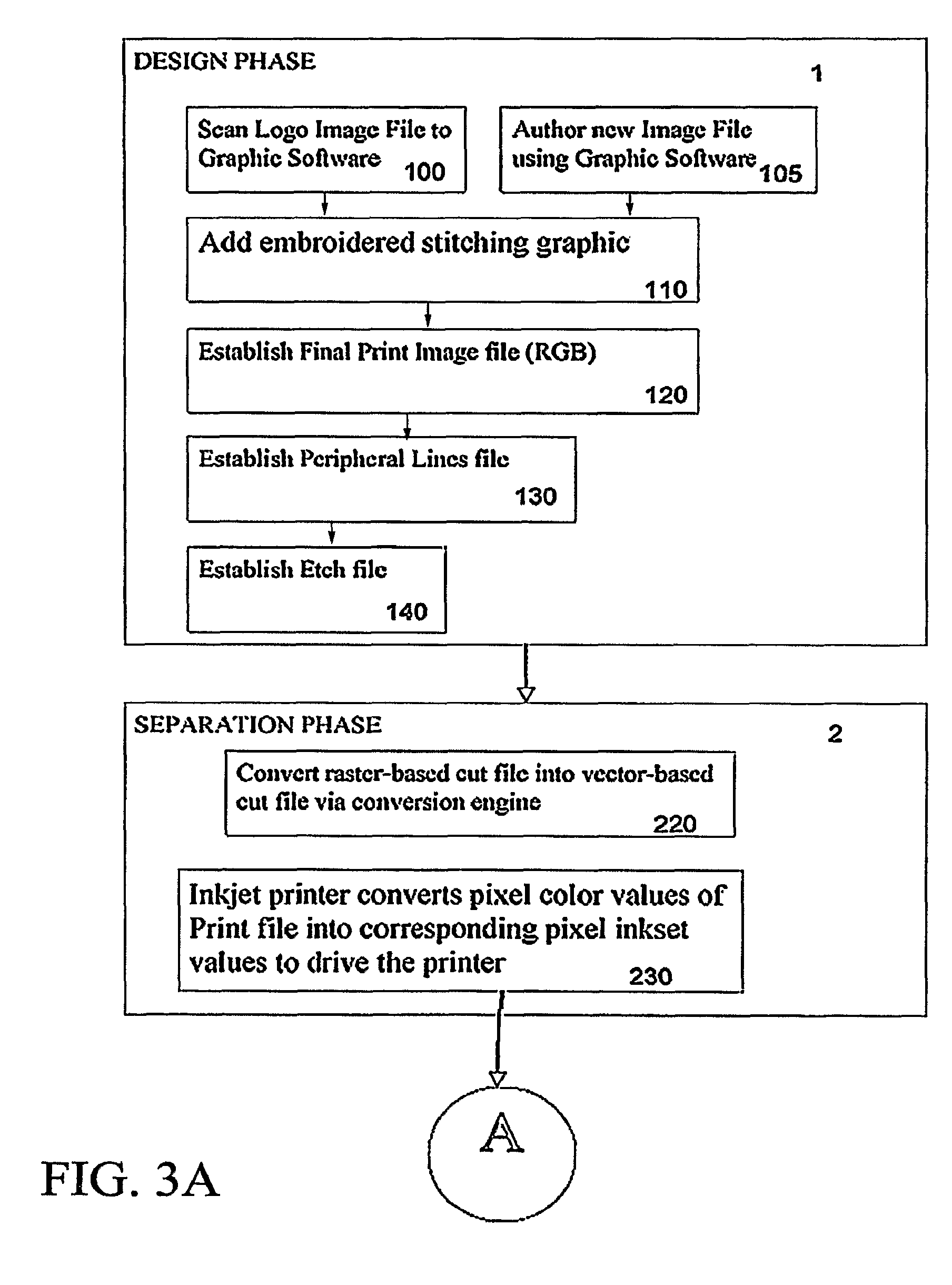Digital printed applique emblem
a digital printing and emblem technology, applied in the field of transfer emblems, can solve the problems of lack of texture, complex process, time-consuming, etc., and achieve the effects of easy heat sealing or pressure sealing, and simple process
- Summary
- Abstract
- Description
- Claims
- Application Information
AI Technical Summary
Benefits of technology
Problems solved by technology
Method used
Image
Examples
Embodiment Construction
[0032]The present invention is an adhesive appliqué transfer emblem bearing text, numbers, logos and other indicia for the uniform and other industries, as well as the novel process for efficiently producing it in mass production using digital printing, etching and / or cutting techniques. The emblem includes a multi-color printed design appearance with or without simulated and / or textured embroidery stitching, and may be heat sealed to an article of clothing or clothing accessory. In each case the emblem is well-suited for application to any fabric or leather substrate, including coarser non-woven fabrics such as felt and fleece (“non-woven being herein defined as any fabric substrate produced by processes other than weaving. The suitability for a particular fabric depends on the particular heat-seal thermoplastic film used, and as described below various films are available for various fabrics.
[0033]FIG. 1 is a perspective view of an exemplary emblem 10 according to the present inve...
PUM
| Property | Measurement | Unit |
|---|---|---|
| softening point | aaaaa | aaaaa |
| temperature | aaaaa | aaaaa |
| temperature | aaaaa | aaaaa |
Abstract
Description
Claims
Application Information
 Login to View More
Login to View More - R&D
- Intellectual Property
- Life Sciences
- Materials
- Tech Scout
- Unparalleled Data Quality
- Higher Quality Content
- 60% Fewer Hallucinations
Browse by: Latest US Patents, China's latest patents, Technical Efficacy Thesaurus, Application Domain, Technology Topic, Popular Technical Reports.
© 2025 PatSnap. All rights reserved.Legal|Privacy policy|Modern Slavery Act Transparency Statement|Sitemap|About US| Contact US: help@patsnap.com



